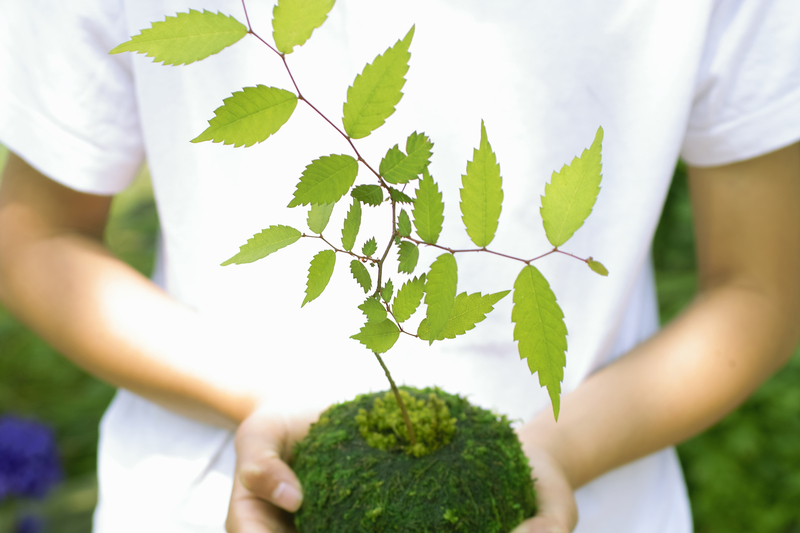Planting the Seeds of Wonder in a Kid's Garden
Posted on 24/08/2025
Planting the Seeds of Wonder in a Kid's Garden
Imagine a magical world where children's hands dive into soil, tiny seeds burst into vibrant life, and every leaf unfurls a new story. Creating a children's garden is more than growing vegetables or flowers--it's about nurturing curiosity, fostering responsibility, and planting the seeds of wonder in a child's heart. Let's explore how to captivate young minds and create a thriving, educational, and enchanting kid's garden.

Why a Kid's Garden? The Lasting Impact of Gardening with Children
Gardening isn't just play; it's a living classroom. When kids participate in gardening activities, they develop essential life skills, bond with nature, and build memories that last a lifetime. Gardening with kids can:
- Spark curiosity about science and nature
- Encourage healthy eating through homegrown produce
- Instill responsibility and patience
- Boost physical activity and outdoor play
- Foster creativity and imagination
Involving children in gardening instills valuable traits and knowledge. From the smallest seedling sprout to the tallest sunflower, every garden journey is a lesson waiting to unfold.
Getting Started: Laying the Foundations for Your Child's Garden
Choosing the Perfect Spot
A successful kid's garden begins with location. Opt for a patch with sunlight, easy access to water, and visibility from your home. Nearby, you can monitor the garden and watch your children's progress daily. If space is limited, consider container gardens, raised beds, or vertical planting--the magic of gardening can happen anywhere!
Selecting The Best Plants for a Children's Garden
Choose plants that intrigue and engage young gardeners. Look for varieties with rapid rewards, unique textures, fun shapes, or delicious crops. Here are some classic and fun options for planting seeds of wonder in your child's garden:
- Sunflowers: Tower over the garden, easy to plant, fast to grow, and produce edible seeds.
- Snapdragons: Squeezable blooms offer a playful, interactive experience.
- Pumpkins & squash: Large leaves and sprawling vines make every day an adventure.
- Strawberries & cherry tomatoes: Quick-growing fruits that become tasty snacks.
- Radishes: Super-fast growers (great for the impatient!), ready in under a month.
- Sensory plants: Lamb's ear for softness, mint for scent, or nasturtium for peppery taste and color.
Tip: Let kids pick some plants, too. Allowing children to choose their own seeds increases excitement and personal connection to their garden.
Supplying the Right Tools for Little Hands
Equip your budding gardeners with safe, child-sized tools. Mini trowels, small spades, a watering can, and gloves will go a long way in making gardening fun and safe. Personalized tools or colorful options add a sense of ownership and pride.
Planting: Growing More than Just Plants
Designing a Playful Kids' Garden Layout
Encourage creativity by letting your children help design the garden. Try these fun ideas:
- Shapes & Patterns: Plant in the shape of a spiral, a smiley face, or even their initials.
- Miniature Edible Forests: Combine beans for trellis-climbing, sunflowers as "trees", and strawberries as "ground cover".
- Secret Spaces: Create a bean teepee or sunflower house for a magical hideaway.
- Stepping Stones & Paths: Personalize garden paths with painted rocks or stepping stones with the kids' footprints.
*Let the garden reflect your child's imagination!*
Teaching Kids to Plant Seeds of Wonder
- Read Seed Packets: Invite children to read planting instructions aloud--great for literacy and following directions!
- Hands-On Planting: Show kids how to dig, space, and cover seeds at the right depth.
- Label Everything: Create fun, DIY plant labels using popsicle sticks and markers or painted rocks.
- Record Growth: Encourage kids to keep a garden journal. Have them draw, write, or paste photos of progress. This also strengthens writing and observation skills.
The Science Behind the Magic: What Kids Learn in the Garden
Biology in Bloom
Every garden is a living biology lab! When planting the seeds of wonder, let children:
- Examine Seeds: How do different seeds look and feel?
- Study Sprouts: What happens when seeds germinate? What do roots and shoots look like?
- Pollinator Watching: Observe bees, butterflies, and birds that visit the garden.
- Composting: Start a compost bin and discuss decomposition and recycling in nature.
*Planting a kid's garden transforms complex concepts into hands-on adventures.*
Weather and Water: Natural Science Lessons
Kids will naturally ask why gardens need sunlight, water, and good soil. Use rain gauges, thermometers, and sun tracking to turn daily gardening into science experiments. Observe how plants respond to weather changes, and introduce concepts like evaporation and the water cycle.
Math Sprouts in the Garden, Too!
Don't miss the math hiding among your rows! Kids can:
- Count seeds, petals, or leaves
- Measure plant growth weekly
- Calculate planting distances or spacing
- Track harvest amounts by weight or number
The garden is a living, growing, interactive math classroom!
Making Gardening Even More Fun: Engaging Activities
Fun Projects to Plant the Seeds of Wonder
Bring extra delight into the garden with these creative, kid-focused activities:
- Scavenger Hunts: Search for colors, shapes, bugs, or secret garden items.
- Garden Art: Paint rocks, decorate pots, or craft wind chimes to hang among the plants.
- Miniature Fairy or Dinosaur Gardens: Invite imagination into the beds with tiny figurines and houses.
- Storytime in the Garden: Read nature-themed books surrounded by growing plants.
- Bug Hotels and Bird Feeders: Build shelters with sticks, leaves, and pine cones to observe insect and bird visitors up close.
- Garden Parties: Host a harvest celebration with snacks made from garden-grown produce--even just sweet strawberries or cherry tomatoes!
Encourage Ongoing Exploration
Never stop nurturing curiosity. Research together, visit local plant nurseries, or take field trips to botanical gardens. Give children their own section of the garden every year to make new discoveries. Celebrate failures as well as successes; every wilted seedling is a story and a lesson.
Sustainability and Responsibility: Growing Green Children
Eco-Friendly Practices for Young Gardeners
Use your kids' garden as an opportunity to teach respect and care for the environment:
- Compost kitchen scraps to feed the soil naturally.
- Collect rainwater in barrels for gentle watering.
- Opt for organic seeds and natural pest solutions.
- Talk about local plants and pollinators' needs.
By planting the seeds of wonder in your child's garden, you are also planting the roots of sustainable thinking and environmental stewardship.
Sharing the Bounty and the Joy
Teach kids the value of generosity by sharing extra produce with neighbors, friends, or a local food pantry. Encourage them to create bouquets, nature crafts, or potted plants as heartfelt gifts.
Common Challenges: Turning Stumbles into Triumphs
Patience and Perseverance
Gardens teach that growth takes time. Some seeds take weeks to sprout. Storms, pests, and mistakes happen. Encourage children to see setbacks as part of the journey. Each problem is a puzzle, waiting for a solution.
Celebrate small successes--the first green shoot, a ripening berry, a butterfly sighting. Every little triumph sustains the spark of wonder.
Dealing with Dirt, Bugs, and Weather
Let kids get messy! Embrace the mud, admire the worms, and watch together as weather shapes the garden's growth. Equip children with boots and raincoats for wet days, sunhats and sunscreen for hot ones. Make even pest-patrol an adventure--can you spot the ladybug or trace the path of a wiggly worm?

Harvest and Beyond: Reaping the Rewards Together
Celebrating the Garden's Gifts
Harvest time is pure joy. Invite children to pick fruits, taste herbs, and collect seeds for next season. Cook together--simple salads, herb butters, or even edible flower treats! Make memories and savor every bite of your homegrown bounty.
Preserving the Wonder Year-Round
In colder months, keep the magic alive indoors: start kitchen windowsill gardens, read and dream about next year's plantings, or craft with saved seeds and dried flowers.
Conclusion: Planting the Seeds of Wonder in a Kid's Garden
Planting the seeds of wonder in your child's garden is about nurturing more than vegetables and flowers. It's about sparking curiosity, teaching responsibility, building confidence, and creating precious family memories. The laughter, stories, and discoveries among the leaves and petals will echo long after the harvest has ended.
So grab a packet of seeds, dig in the dirt, and let curiosity bloom. Together, you'll grow a garden--and a lifelong love for learning and nature.
For those looking to inspire and educate, there's no better classroom than a children's garden--where every season brings opportunities to plant new seeds of wonder, year after year.
- Start today--no plot is too small, no idea too wild. Your children's garden awaits!



